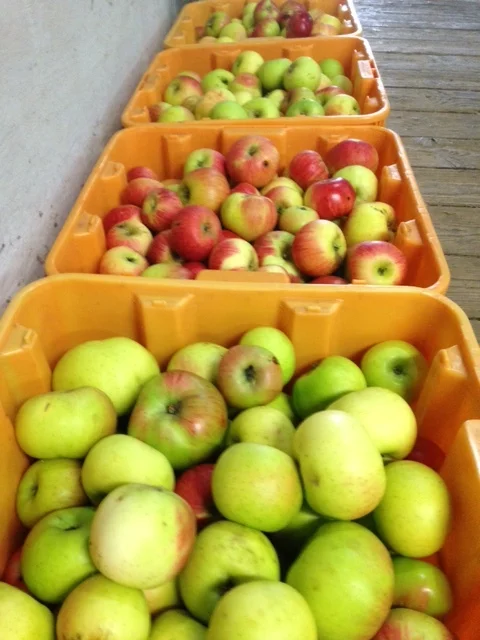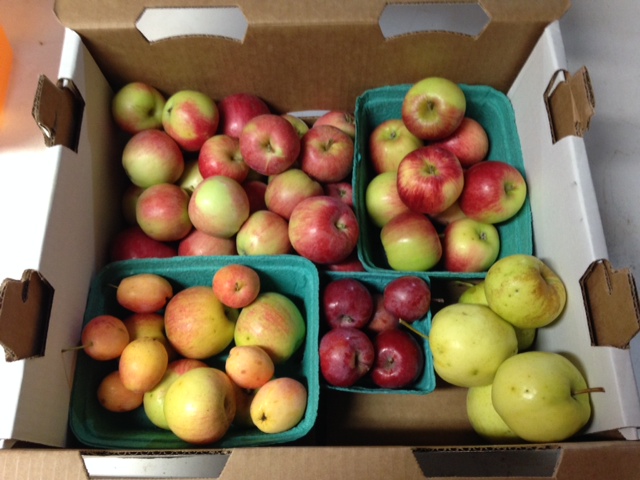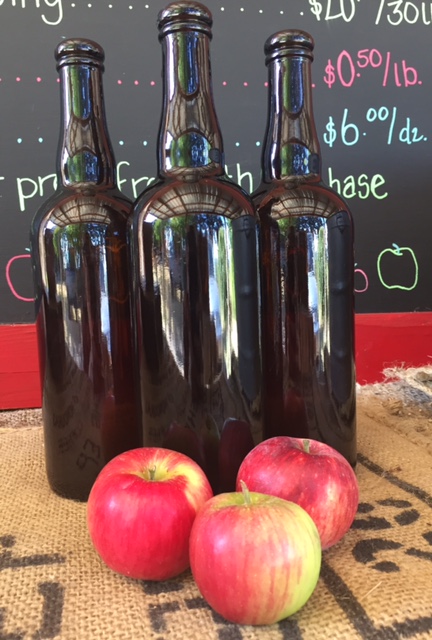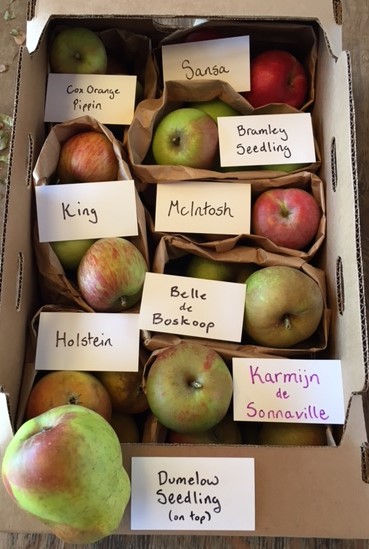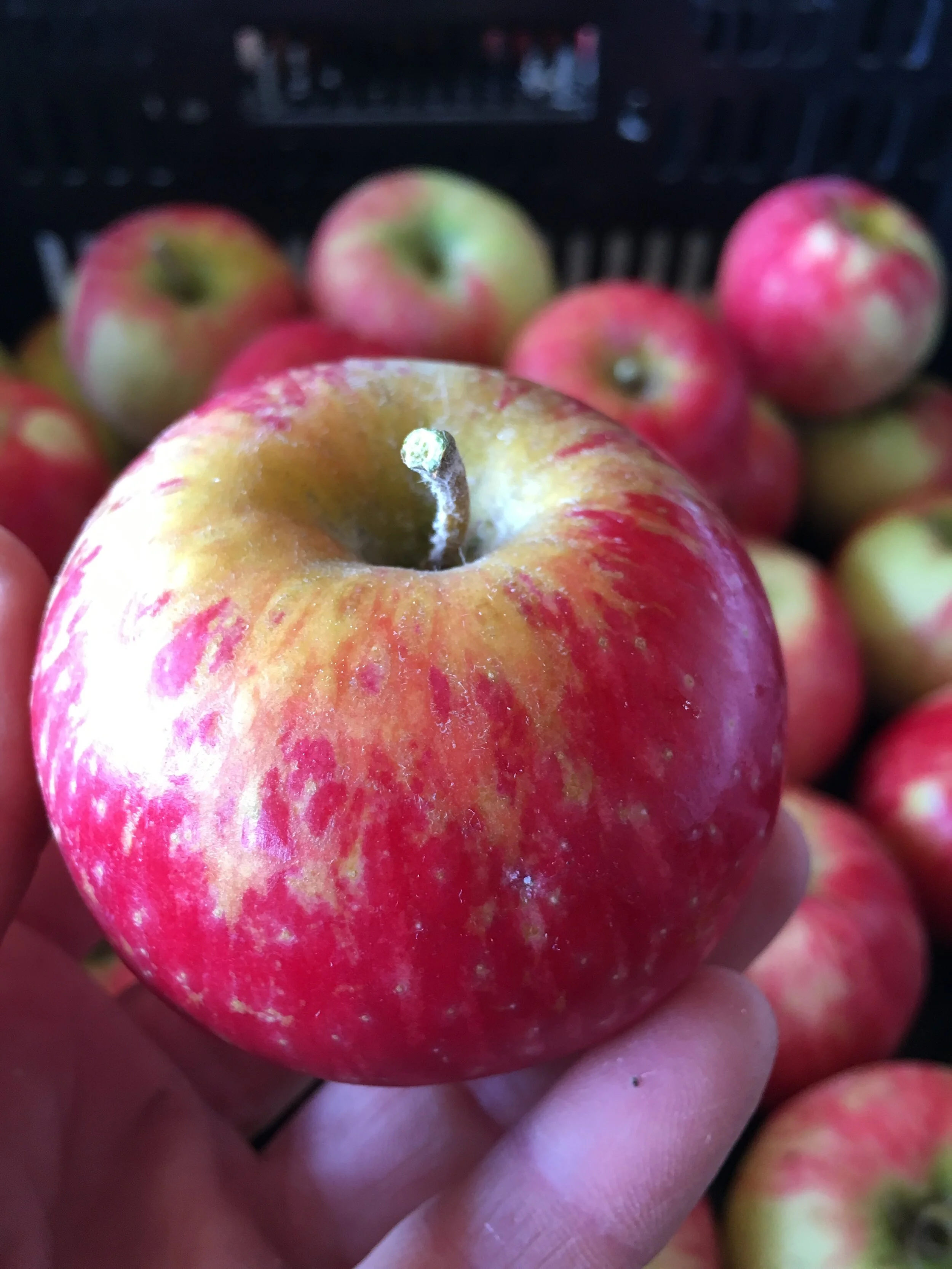Our Farming Practices
Organic and more
Our nutrient based approach to organic orchard care.
Queener Farm’s previous owners switched in early 2021 from a “soft organic” approach, where we used mostly plant or mineral based sprays to control disease, to a nutrient based approach. This new approach involved detailed analysis of the tree sap in the plant tissue to understand the nutrients flowing through the tree at different points. They tested for close to 20 different nutrients, several times a year. Then the orchard received a spray program of a variety of nutrient combinations and microbial helpers to bring the trees closer to ideal levels of these. As many of those who farm and garden know, very healthy plants suffer less disease and fewer insect attacks. Those who have pioneered this method have conducted hundreds of thousands of sap tests and realized early on that plants with natural disease resistance showed ideal levels of all these nutrients. When less resistant plants were brought to those levels they also showed much better resistance to disease and insects.
The goal over the next couple of years was to bring all our tree nutrient levels to the point where even the most disease prone develop their own resistance. Just as a side note, since insect resistance is the hardest to achieve, we continue to use Cyd-x, a biological, to control coddling moth. It’s organic approved and it has no effect on any other insects so our beloved pollinators are safe.
For a long time orchardists at Queener have added more resistant apple varieties to the orchard and we continue to encourage all orchards to do that. That said, we started with this orchard of over 100 varieties, many very disease prone, so finding ways to build resistance in these existing trees is like a holy grail to us. If we can have an orchard with all this crazy diversity and have all of those trees produce an abundance of marketable apples without harsh sprays – well that would be amazing.
In much of agriculture there is a framework that governs how we care for our plants and, especially, how we deal with pests and disease. You identify a pest or disease, like a fungal pest, and you spray the thing that kills the pest. In the worst conventional orchards you might spray harsh chemicals before any pest, or disease, is apparent to prevent it ever appearing. That is often the case in apples, since once you see many of the fungal problems, it’s too late to prevent considerable damage. The organic model hasn’t been that different, in its approach, but the sprays are less, sometimes not at all, toxic to the environment. But, they all have one thing in common – kill the pest or fungal organism. The standard apple organic program, which we have never used, is to spray lots of lime sulfur throughout the season, lots of copper during the dormant time and then spray, broad spectrum but organic, insecticides while the fruit are present. When it came to nutrients, in both organic and chemical systems, it was often to just pay attention to NPK (Nitrogen, Phosphorous, Potassium) plus, with apples, calcium.
The spray-to-cure-disease approach (even the softest, most creative, organic version of it) started to feel wrong over the last couple of years. How well it worked varied a lot with the weather each year. Some trees improved and others got worse. We wondered why some trees, in the midst of rampant fungal spores from adjacent trees, and pest insects all around them, would have near flawless apples. We also wondered why some trees, even in the best possible weather, would always have scab. Why did a spore cause a scab infection on one tree and not another? Those researching nutrient levels are finding that the amounts of certain nutrients an apple trees moves through its system have a profound effect on whether it reacts to those spores. We’re studying that research, and with our extensive collection of apple varieties to test and observe, hopefully adding to it.
To begin this in the orchard there were tests of five indicator varieties. The disease and insect susceptibility of all our apples were documented and placed into several categories to test one from each category and then use that information to make assumptions about the others. A nutrient combination was created based on the test, applied a couple of times and then tested again. All while watching the trees to see how they responded. With the next results the formula was tweaked again and added in another variety. The vast majority of the varieties have responded well. All while watching to see if the fruit and the trees continue to show improved health. The objective is to gradually use precisely formulated foliar nutrients to bring the challenging varieties to full health. As we continue the nutrient-based philosophy, we may follow up with more soil testing and add longer lived minerals and nutrients to the soil. Over time, the healthier trees will be adding most of what they need to the soil themselves as they drop their leaves each winter.
It’s an expensive proposition, more was spent on just the testing than was spent in the past on the whole spray program. That said, the testing is how we learn and, in the end, we will have information that well benefit everyone hoping to keep a wide diversity of apples healthy and productive.
Here is a link to the place that did our testing and continues to advise us on nutrients. Scroll down to see the detailed reports we get. http://www.apical-ag.com/ . We are excited though to have found them. Our orchard consultant, working with Apical Ag is fellow orchardist Dan Rinke from Art Science Cider https://www.artandsciencenw.com
Here is a glimpse at the initial test of one of our most challenging varieties – the Giant Russian Crab. Historically, Queener farmers almost never got harvestable fruit from these and now they produce many flawless apples bigger than golf balls in early June. ------------------
This approach was initially inspired by John Kempf at Advancing Eco Ag – their website is here https://www.advancingecoag.com
The podcasts, articles and videos from John Kempf pointed to a new approach. He, and his company, are leading the way in this and without his prolific publishing and speaking we would never have known that this approach was not only possible but was being successfully used in orchards around the world.
In March of 2023, the Queener Farm passed into the hands of Graham and Christina Fordyce who now manage the orchard. They have learned so many valuable insights like the above information from Jeannie Berg who last farmed here. The Fordyces continue to consult with Jeannie and other contacts to maintain the more-than-just-organic but truly holistic approach that makes this orchard so unique.
We never herbicide under the trees and seldom mow so that our pollinators have food all year round.







